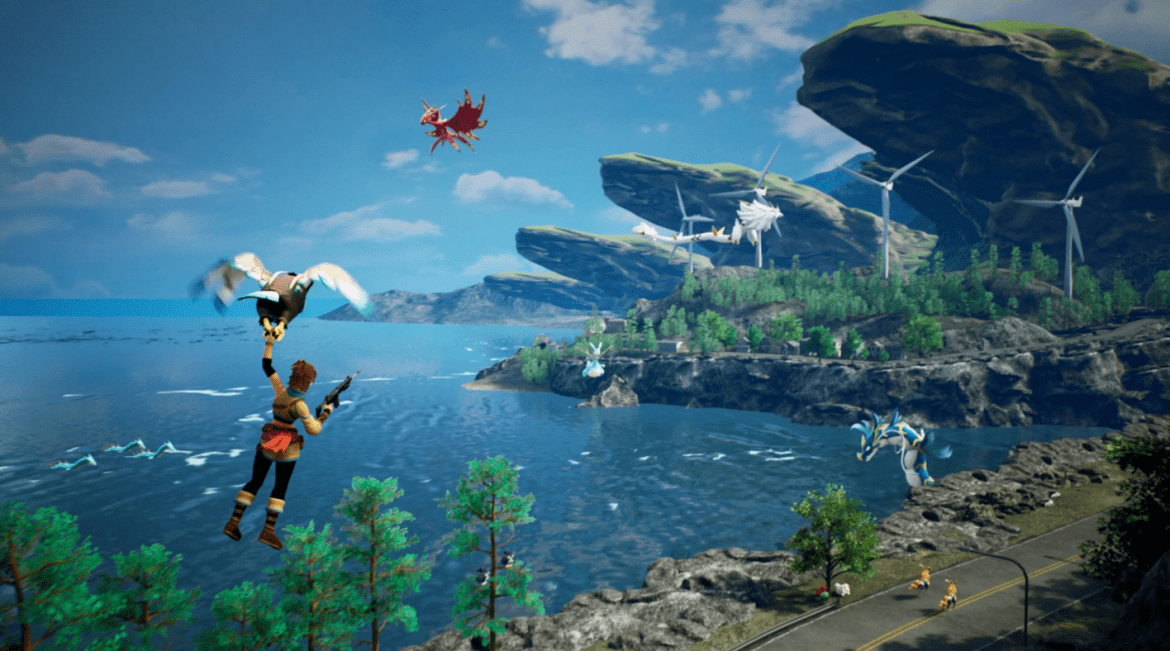A game with a lot of stitched-together content is likely garbage, but when it’s done well, it becomes a delicate balance. The unexpected success of “Palworld” can be traced back to a unique stitching style, reminiscent of the developers’ previous game that stitched elements from “The Legend of Zelda: Breath of the Wild.” However, it didn’t gain much attention until they stitched elements from “Pokémon,” propelling it to fame. Why does this game stand out in terms of stitching? It’s not just an intuitive feeling but a noticeable contrast that makes it stand out.
The most distinctive and imaginative gameplay revolves around Pals in the game.

Pals are creatures similar to the ones in “Pokémon,” usable in battles. However, in this game world, they become more realistic beings. They can fight alongside the main character, assist in base work, and even serve as food when the character is hungry. During battles, players can pick up Pals as flamethrowers, equip them with machine guns for added firepower, or join the fight directly with a hatchet and bow when a Pal is about to be defeated. The game’s design in creature battles breaks the framework of “Pokémon,” providing a completely unleashed experience. The combat mode in this game is not an improvement on “Pokémon” but more like transforming dinosaurs from “Ark: Survival Evolved” into Pals for battle, creating new and enjoyable gameplay by stitching together different game concepts. However, these interesting features wouldn’t attract so many players if they were merely superficial stitches.

The Management Gameplay
What makes this game good is the thoughtful stitching of a decent set of gameplay elements. Although the starting area and the level 30 giant Pal guarding the entrance may remind players of familiar games, “Palworld” has its own growth process.
From picking up twigs to obtaining the first Pal, the game officially enters the starting phase once the player builds their first base. Opening the game’s workbench reveals a comprehensive tech tree, including essential management elements like farming, mining, and cooking, all of which require the player’s hands-on construction. It allows captured Pals to find new uses, leading to the emergence of endless “Pokémon capitalists” memes on the internet.
Pal Attributes
With the enriched management gameplay, the development attributes of Pals also undergo more changes. In addition to conventional combat values, the game seamlessly allows players to add a plethora of production skills to Pals that match their characteristics. These skills, linked to specific Pals and with random attributes that can increase or decrease their values, enhance the game’s replayability. Whether a player wants a quality worker Pal, a combat Pal, or both, it depends on the player’s time and luck.
However, if players mistreat their Pals by forcing them to work relentlessly, Pals have a crucial attribute called SAN value. When it drops to zero, the Pal permanently dies. This logically and humorously stitched element adds to the fun and quirks of the entire game.

Combat and Development
While the management gameplay is already full of quirks, don’t forget that Pals are primarily used for battles. Each Pal, besides having rich production skills, also possesses unique passive or active skills. With the development of the tech tree, Pals can do more than just fight monsters. In the late game, players can create exclusive tools for Pals, turning them into flamethrowers or RPG launchers. Some Pals can even become direct transportation, flying in the air or moving faster in water. The most absurd part is that these Pal skills can be upgraded by fusing other Pals of the same kind, leading to the breeding of new species. If players get tired of Pals, the tech tree offers various melee and ranged weapons for characters to personally use in battle. Why go into battle personally? Because in advanced maps, the Pals have incorporated moves from monsters in “Monster Hunter,” creating a feeling of playing another hunting game.

“Palworld” has truly stitched together a heap of games. While the base gameplay is rich and solid, the depth is not enough for thorough exploration. The first early access version even lacks a decent storyline, leaving many blanks in different scenes and creating a sense of disappointment, as if the game ends abruptly at this point. The game’s map gives a strong sense of déjà vu from scenes in “Elden Ring,” while the UI and sound effects carry a distinct “Zelda” flavor, and the base-building survival gameplay is borrowed from “Ark: Survival Evolved.” However, it’s the Pokémon-inspired creature battles and management gameplay that have spread across the internet. Why? My answer is that the stitched elements from other games aren’t as well-executed as the original works. The expansion of the base-building gameplay doesn’t match “Ark,” and the rough adversity in the game doesn’t compare to the brilliance of “Elden Ring.” But in terms of Pal content, the game showcases infinite creativity, realizing gameplay fantasies that “Pokémon” could only dream of, satisfying those who grew up playing “Pokémon.”



Leave a Reply